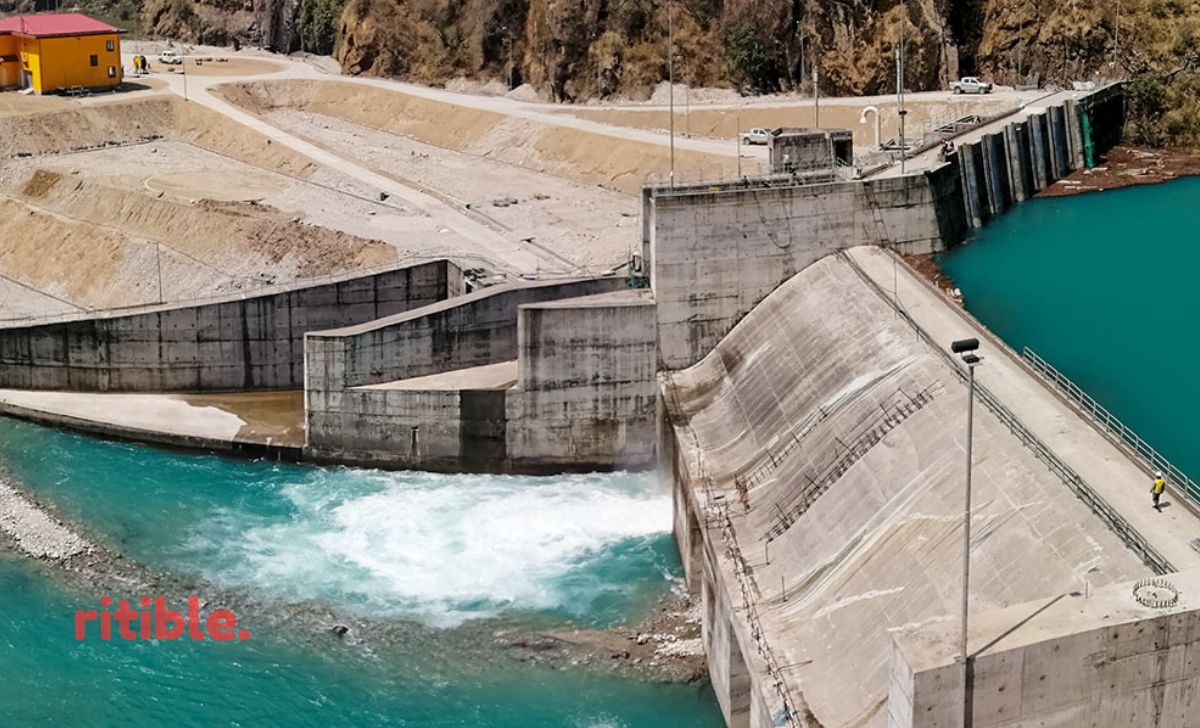Lama Bagar, Dolakha — The Upper Tamakoshi Hydroelectric Plant, Nepal’s largest with a capacity of 456 MW, resumed operations on Tuesday night after a significant landslide on Ashoj 12 caused extensive damage. The plant had initially planned to start production by Poush 10, but it began filling its reservoir and generating power earlier than expected.
The left-side sand trapping pond, which had been repaired, was restored to operation, enabling the plant to start power generation by directly channeling water from the dam. According to the plant’s manager, Purnagopal Ranjit, power production began shortly after the repairs were completed.
The landslide had severely damaged the power station, including the sand trapping ponds and transmission line tower number 46. However, with the repair of the left-side pond and the completion of the tower construction, the plant resumed production. By 7:40 PM on Tuesday, 120 MW of electricity was being generated.
To meet immediate demand, two of the four gates were opened to allow water to flow directly into the power station. The plant expects to produce between 125-130 MW by Poush. As the water level decreases, production is expected to drop.
The Chief Executive Officer of the hydroelectric plant, Mohan Prasad Gautam, mentioned that full restoration of the plant is expected by the first week of Magh (mid-January). He added that complete repairs to the sand trapping ponds could take up to three weeks, and the reconstruction of the damaged power station could take even longer. Once repairs are complete, the plant plans to resume full capacity, supplying up to 130 MW to the national grid. By the first week of Magh, production is expected to reach full capacity, with 456 MW available during peak demand.
The landslide, which caused major damage to the control room, sand trapping ponds, and the canal (culvert) that channels water to the ponds, has delayed operations. The plant’s design discharge capacity is 66 cubic meters per second, but the landslide caused water flow to rise to 461 cubic meters per second, affecting operations.
Upper Tamakoshi Hydro Power Plant had a Power Purchase Agreement (PPA) with the Nepal Electricity Authority (NEA), stating that if the water flow reaches 250 cubic meters per second, the plant must shut down. Consequently, production was halted on Ashoj 11.
The plant has filed an insurance claim of NPR 1.8 billion for the damages caused by the landslide, including civil, electromechanical, and hydro equipment losses. With a daily power production capacity of NPR 4 crore, the delay in full operation adds to the challenges for the NEA in managing winter load, especially as the plant has been a crucial backup for power supply during the winter months.
Upper Tamakoshi, which operates as a semi-reservoir project (PROR), generates power at full capacity during the monsoon and operates for four hours at full capacity during the winter months.




